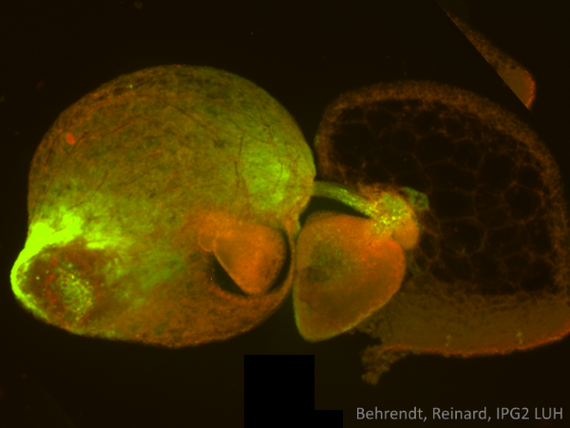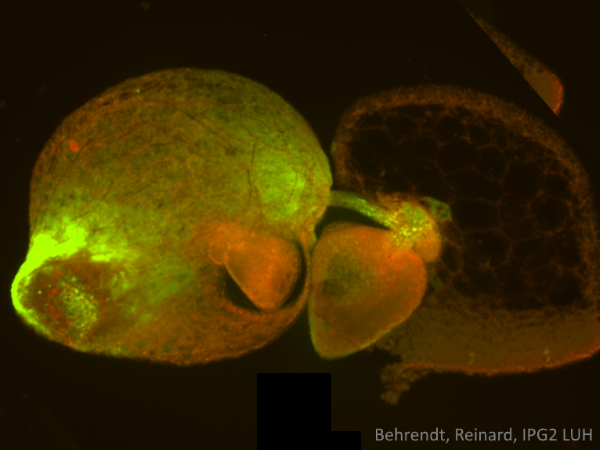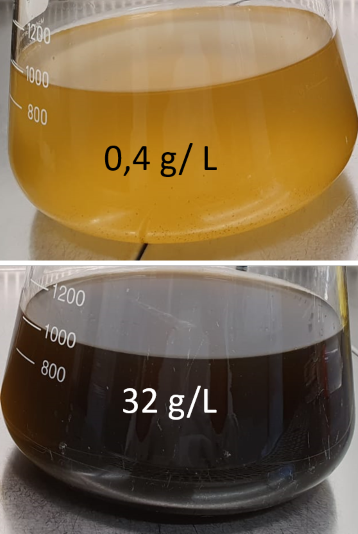


Wolffia australiana
Duckweeds like Wolffia australiana can double every 48 hours. Although W. australiana is just a few millimetres in size, it is a highly evolved monocotyledonous plant with amazing properties:
- An almost exclusively vegetative propagation prevents the outcrossing of desired properties.
- The plant can be grown on solid media as well as in liquid culture.
- The strongly reduced structure of the plant body distinguishes between two different forms:
- the green "fronds" floating on the water surface are very rich in protein;
- the "turions", which sink in winter and contain starch, are not coloured.
- W. australiana can be used as food or feed.
- Like other duckweeds, it can be used for the clarification of heavily nitrate- or phosphate-polluted waters.
We have recently sequenced and analysed both the genome [PRJNA427164] and the transcriptome of this fascinating plant.



Phaeodactylum tricornutum
The diatom Phaeodactylum tricornutum is gaining increasing interest in the biotechnology sector, as it is suitable for both biofuel production and the production of recombinant proteins.
It contains few interfering secondary substances, has very high growth rates and is particularly suitable for large production plants, as it achieves very high cell densities. Unlike most other microalgae, diatoms are diploid at all stages of the life cycle, except for the germ cells.
A major advantage of this species for the production of pharmaceutical proteins is that they are grown in saline water and therefore the cultures cannot be contaminated by green algae. The fatty acid eicosapentaenoic acid (EPA) produced by diatoms of this species has antibacterial properties.
Transformation is simple and efficient using particle bombardment (so-called gene gun).
We are actually not continuing our work on Chlamydomonas reinhardtii [Kirchner 2016 et al.], as the expression levels are low compared to Phaeodactylum and a very complex codon usage adjustment is always necessary.


